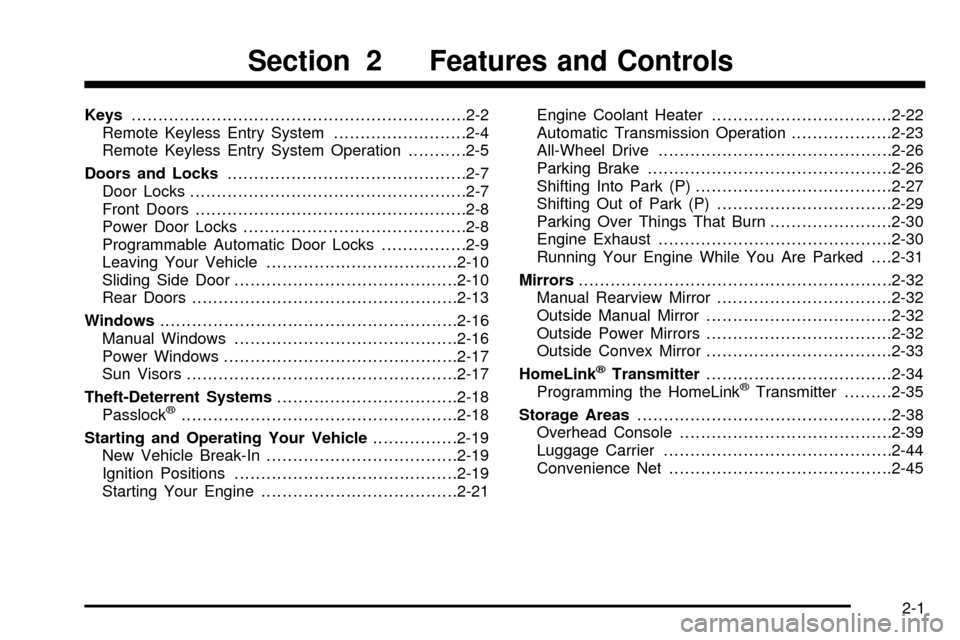Page 18 of 382
If your vehicle has the
optional touring package,
your vehicle will have a
center console. To raise or
lower the center console,
press the button located
between the beverage
holders. Sit in the center
seating position only when
the console is in an upright
and locked position.
For details about headrests, see
Head Restraints on
page 1-5.
Bucket Seats
Your vehicle may have rear bucket seats with an
adjustment release bar located under the front of the
seats. These seats can be adjusted forward or rearward
with the release bar. Pull the release bar up to release
the seat bottom. Slide the seat where you want it
and then let go of the release bar. Then try to move the
seat with your body to make sure the seat is locked
into place.
1-12
Page 24 of 382

Q:If I'm a good driver, and I never drive far from
home, why should I wear safety belts?
A:You may be an excellent driver, but if you're in an
accident ± even one that isn't your fault ± you and
your passengers can be hurt. Being a good
driver doesn't protect you from things beyond your
control, such as bad drivers.
Most accidents occur within 25 miles (40 km) of
home. And the greatest number of serious injuries
and deaths occur at speeds of less than 40 mph
(65 km/h).
Safety belts are for everyone.
How to Wear Safety Belts Properly
This part is only for people of adult size.
Be aware that there are special things to know about
safety belts and children. And there are different
rules for smaller children and babies. If a child will be
riding in your vehicle, see
Older Children on page 1-35orInfants and Young Children on page 1-38. Follow
those rules for everyone's protection.
First, you'll want to know which restraint systems your
vehicle has.
We'll start with the driver position.
Driver Position
This part describes the driver's restraint system.
Lap-Shoulder Belt
The driver has a lap-shoulder belt. Here is how to wear
it properly.
1. Close and lock the door.
2. Adjust the seat so you can sit up straight. To see
how, see ªSeatsº in the Index.
1-18
Page 25 of 382
3. Pick up the latch plate and pull the belt across you.
Do not let it get twisted.
4. Push the latch plate into the buckle until it clicks.
Pull up on the latch plate to make sure it is secure.
If the belt is not long enough, see
Safety Belt
Extender on page 1-34.
Make sure the release button on the buckle is
positioned so you would be able to unbuckle the
safety belt quickly if you ever had to.The lap part of the belt should be worn low and snug on
the hips, just touching the thighs. In a crash, this applies
force to the strong pelvic bones. And you would be less
likely to slide under the lap belt. If you slid under it, the
belt would apply force at your abdomen. This could cause
serious or even fatal injuries. The shoulder belt should go
over the shoulder and across the chest. These parts of
the body are best able to take belt restraining forces.
The safety belt locks if there is a sudden stop or crash,
or if you pull the belt very quickly out of the retractor.
1-19
Page 26 of 382
Shoulder Belt Height Adjuster
Before you begin to drive, move the shoulder belt
adjuster to the height that is right for youTo move it down, push it in at the top of the arrows and
move the height adjuster to the desired position.
You can move the adjuster up just by pushing up on the
shoulder belt guide. After you move the adjuster to
where you want it, try to move it down without pushing
in to make sure it has locked into position.
Adjust the height so that the shoulder portion of the belt
is centered on your shoulder. The belt should be
away from your face and neck, but not falling off your
shoulder.
1-20
Page 33 of 382
The best way to protect the fetus is to protect the
mother. When a safety belt is worn properly, it's more
likely that the fetus won't be hurt in a crash. For
pregnant women, as for anyone, the key to making
safety belts effective is wearing them properly.
Right Front Passenger Position
To learn how to wear the right front passenger's safety
belt properly, seeDriver Position on page 1-18.
The right front passenger's safety belt works the same
way as the driver's safety belt Ð except for one
thing. If you ever pull the lap portion of the belt out all
the way, you will engage the child restraint locking
feature. If this happens, just let the belt go back all the
way and start again.
Center Passenger Position
Lap Belt
If your vehicle has rear bench seats, someone can sit in
the center positions.
1-27
Page 37 of 382
The lap part of the belt should be worn low and snug on
the hips, just touching the thighs. In a crash, this applies
force to the pelvic bones. And you'd be less likely to slide
under the lap belt. If you slid under it, the belt would apply
force at your abdomen. This could cause serious or even
fatal injuries. The shoulder belt should go over the
shoulder and across the chest. These parts of the body
are best able to take belt restraining forces.
The safety belt locks if there's a sudden stop or a crash.
{CAUTION:
You can be seriously hurt if your shoulder belt
is too loose. In a crash, you would move
forward too much, which could increase injury.
The shoulder belt should ®t against your body.
To unlatch the belt, just push the button on the buckle.
1-31
Page 67 of 382
5. Pull the rest of the belt all the way out of the
retractor to set the lock.6. To tighten the belt, feed the shoulder belt back
into the retractor while you push down on the
child restraint. You may ®nd it helpful to use your
knee to push down on the child restraint as
you tighten the belt.
7. Push and pull the child restraint in different
directions to be sure it is secure.
To remove the child restraint, just unbuckle the vehicle's
safety belt and let it go back all the way. The safety
belt will move freely again and be ready to work for an
adult or larger child passenger.
1-61
Page 79 of 382

Keys...............................................................2-2
Remote Keyless Entry System.........................2-4
Remote Keyless Entry System Operation...........2-5
Doors and Locks.............................................2-7
Door Locks....................................................2-7
Front Doors...................................................2-8
Power Door Locks..........................................2-8
Programmable Automatic Door Locks................2-9
Leaving Your Vehicle....................................2-10
Sliding Side Door..........................................2-10
Rear Doors..................................................2-13
Windows........................................................2-16
Manual Windows..........................................2-16
Power Windows............................................2-17
Sun Visors...................................................2-17
Theft-Deterrent Systems..................................2-18
Passlock
ž....................................................2-18
Starting and Operating Your Vehicle................2-19
New Vehicle Break-In....................................2-19
Ignition Positions..........................................2-19
Starting Your Engine.....................................2-21Engine Coolant Heater..................................2-22
Automatic Transmission Operation...................2-23
All-Wheel Drive............................................2-26
Parking Brake..............................................2-26
Shifting Into Park (P).....................................2-27
Shifting Out of Park (P).................................2-29
Parking Over Things That Burn.......................2-30
Engine Exhaust............................................2-30
Running Your Engine While You Are Parked. . . .2-31
Mirrors...........................................................2-32
Manual Rearview Mirror.................................2-32
Outside Manual Mirror...................................2-32
Outside Power Mirrors...................................2-32
Outside Convex Mirror...................................2-33
HomeLink
žTransmitter...................................2-34
Programming the HomeLinkžTransmitter.........2-35
Storage Areas................................................2-38
Overhead Console........................................2-39
Luggage Carrier...........................................2-44
Convenience Net..........................................2-45
Section 2 Features and Controls
2-1